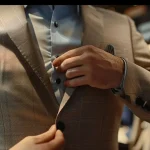Introduction
The 1555 Portrait of Servais stands as a remarkable example of Renaissance art, capturing not just the likeness of its subject but also the spirit of an era marked by cultural and artistic achievement. This blog post delves into the history, significance, and lasting impact of this portrait, exploring its creation, the artist behind it, and its relevance today.
The Artist Behind the Portrait
The 1555 Portrait of Servais was painted by Frans Pourbus the Elder, a notable figure in the Flemish painting tradition. Born in 1545 in Bruges, Pourbus was known for his detailed and realistic portrayals of individuals, reflecting their social status and personality.
Frans Pourbus: A Brief Overview
| Detail | Information |
| Birth | 1545, Bruges |
| Death | 1581, Paris |
| Style | Flemish Renaissance |
| Notable Works | Portraits of nobility and figures |
Pourbus was a master of capturing not only the physical features of his subjects but also their inner character. His style combines meticulous attention to detail with a deep understanding of human expression, making his works timeless.
Pourbus’s Influence and Technique
Frans Pourbus was influenced by the masters of the Northern Renaissance, especially in his use of oil paint and intricate detail. His technique involved:
- Layering: Using multiple layers of paint to create depth.
- Glazing: Applying thin transparent layers to enhance luminosity.
- Attention to Detail: Focusing on textures and intricate designs in clothing and backgrounds.
These techniques contributed to the lifelike quality of his portraits, including the 1555 Portrait of Servais.
Understanding the 1555 Portrait of Servais
The portrait features Servais de la Croix, a prominent figure of his time. It is believed that Servais was a wealthy merchant or nobleman, evident from his elaborate clothing and accessories. The portrait is characterized by its lifelike representation and rich colors, typical of Pourbus’s technique.
Key Features of the Portrait
- Lifelike Representation: The details in facial features and expressions convey a sense of realism.
- Rich Color Palette: The use of color enhances the depth and texture of the painting.
- Symbolism: Elements in the portrait may symbolize Servais’s status and achievements.
Symbolic Elements in the Portrait
- Attire: Servais is depicted in luxurious clothing, reflecting his wealth and social status.
- Jewelry: The presence of ornate jewelry signifies power and influence.
- Background: The muted background serves to emphasize the subject, enhancing the viewer’s focus on Servais.
Historical Context
The creation of the 1555 Portrait of Servais occurred during the Renaissance, a time of great cultural rebirth in Europe. This period saw advancements in art, science, and philosophy, leading to a greater appreciation for humanism and individual expression.
Impact of the Renaissance on Art
- Focus on Realism: Artists began to prioritize realistic depictions of human figures and landscapes.
- Emphasis on Individuality: Portraits became a way to celebrate individual achievements and status.
- Innovative Techniques: Artists explored new methods and materials, enhancing the quality and longevity of their works.
The Role of Patrons in the Renaissance
Patrons played a crucial role in the creation of art during the Renaissance. Wealthy individuals, churches, and governments commissioned works, providing financial support for artists.
- Patrons of Art: Included nobles, wealthy merchants, and the church.
- Commissioned Works: Portraits, altarpieces, and public sculptures.
- Cultural Exchange: Patrons often sought artists from different regions, fostering cross-cultural influences.
The Legacy of the 1555 Portrait of Servais
The 1555 Portrait of Servais has left a lasting legacy in the art world. It serves as a testament to the skill of Frans Pourbus and the cultural significance of portraiture during the Renaissance.
Why This Portrait Matters
- Cultural Heritage: It is an essential piece of Flemish art history, representing the societal values of the time.
- Artistic Influence: The techniques used in this portrait influenced future generations of artists, promoting realism and individual expression in portrait painting.
- Preservation of Identity: The portrait immortalizes Servais, allowing us to glimpse the past and understand the individuals who shaped history.
The Role of Portraiture in Society
Portraits during the Renaissance were not merely artistic expressions; they served specific social functions:
- Documentation: Captured the likeness of individuals for posterity.
- Status Symbol: Represented wealth, power, and social standing.
- Cultural Identity: Reflected the values and beliefs of the time.
Modern Appreciation and Exhibitions
Today, the 1555 Portrait of Servais is housed in The Metropolitan Museum of Art in New York City. It continues to attract art enthusiasts and scholars, who study its composition, technique, and historical context.
Notable Exhibitions
- Renaissance Masterpieces: The portrait was featured in exhibitions focused on Flemish art, showcasing the brilliance of Pourbus’s work.
- Cultural Events: Lectures and seminars often explore the significance of the portrait within the broader context of Renaissance art.
Educational Programs
Many museums, including The Met, offer educational programs that discuss the significance of artworks like the 1555 Portrait of Servais. These programs often include:
- Workshops: Engaging participants in art techniques inspired by Pourbus.
- Guided Tours: Providing insights into the historical context of the painting.
- Lectures: Featuring art historians who delve into the significance of portraiture in the Renaissance.
The Portrayal of Wealth and Status
The 1555 Portrait of Servais vividly illustrates the interplay between art and societal hierarchy during the Renaissance. The clothing, posture, and setting all convey a strong message about the subject’s status.
Clothing and Accessories
- Material: The portrait features luxurious fabrics, which would have been expensive and sought after during the Renaissance.
- Design: Intricate designs often signified the wearer’s wealth and taste.
- Jewelry: Ornate jewelry not only added beauty but also communicated power and social standing.
The Significance of Facial Expression
The expression of Servais in the portrait also holds significant meaning:
- Confidence: The slight smile suggests self-assuredness and a commanding presence.
- Engagement: The direct gaze invites viewers into a personal connection, making the subject appear relatable.
Cultural Reflections in Art
Art often serves as a mirror to the society in which it was created. The 1555 Portrait of Servais reflects the values, norms, and aspirations of the Renaissance period.
Themes in Renaissance Portraiture
- Humanism: Focus on individual experience and personal achievement.
- Status and Power: Art as a means to communicate and solidify one’s social standing.
- Cultural Identity: Portraying the ideals and aesthetics of the time.
Artistic Trends of the Renaissance
The Renaissance saw several artistic trends that influenced works like the 1555 Portrait of Servais:
| Trend | Description |
| Naturalism | Emphasis on lifelike representation of subjects. |
| Use of Perspective | Techniques to create depth and three-dimensionality. |
| Symbolic Elements | Incorporation of objects to convey deeper meanings. |
The Portrait in the Context of European Art
The 1555 Portrait of Servais is not only significant within Flemish art but also plays a crucial role in the broader context of European art history.
Comparison with Other Renowned Portraits
To better understand the significance of the 1555 Portrait of Servais, we can compare it with other notable portraits from the same era.
| Portrait | Artist | Year | Features |
| Mona Lisa | Leonardo da Vinci | 1503 | Iconic smile, sfumato technique, landscape background |
| Portrait of a Man | Hans Holbein the Younger | 1532 | Direct gaze, rich detail, emphasis on clothing |
| Portrait of Elizabeth I | Unknown | 1580 | Elaborate attire, symbolism of power and divinity |
The Influence of Pourbus on European Portraiture
Frans Pourbus’s influence extended beyond his immediate circle. His techniques and styles inspired:
- Contemporary Artists: Many artists adopted his methods in their portraits.
- Future Generations: His work laid groundwork for the evolution of portrait painting in the Baroque period.
Preservation and Restoration Efforts
The 1555 Portrait of Servais has undergone various preservation efforts to maintain its condition for future generations. These efforts are crucial to ensure that the details and colors remain vibrant.
Importance of Art Restoration
- Historical Integrity: Restorations aim to preserve the original intent of the artist.
- Educational Value: Well-preserved artworks can provide insight into historical techniques and materials.
- Cultural Significance: Maintaining artworks supports cultural heritage and education.
Restoration Techniques
- Cleaning: Careful removal of dirt and grime without damaging the paint.
- Consolidation: Strengthening fragile areas to prevent further deterioration.
- Inpainting: Filling in lost areas to restore the visual integrity of the artwork.
Conclusion
The 1555 Portrait of Servais stands as a testament to the artistry of Frans Pourbus and the cultural richness of the Renaissance period. Its detailed portrayal of Servais not only captures the essence of an individual but also reflects the broader themes of wealth, status, and humanism that characterized the time. As we appreciate this masterpiece today, we recognize its enduring legacy and the insights it offers into a pivotal moment in art history.
The Portrait’s Continued Relevance
- Cultural Heritage: The portrait contributes to our understanding of the past.
- Artistic Inspiration: It continues to inspire artists and art enthusiasts alike.
- Educational Resource: Serving as a teaching tool in art history and preservation.
The 1555 Portrait of Servais is more than just a painting; it is a window into the past, inviting us to explore the lives of those who came before us and the art that defined their world.
FAQs about the 1555 Portrait of Servais
Who painted the 1555 Portrait of Servais?
The 1555 Portrait of Servais was painted by Frans Pourbus the Elder, a renowned Flemish artist known for his detailed and realistic portraiture.
What is the significance of the portrait?
The portrait is significant for its artistic mastery, historical context, and its representation of wealth and status during the Renaissance. It captures the essence of the individual, Servais de la Croix, and reflects broader themes of the time.
Where is the portrait currently housed?
The 1555 Portrait of Servais is currently housed in The Metropolitan Museum of Art in New York City, where it is part of their collection of European paintings.
What techniques did Frans Pourbus use in this portrait?
Frans Pourbus employed techniques such as layering, glazing, and meticulous attention to detail to achieve a lifelike representation of Servais, enhancing both the depth and realism of the portrait.
How does the portrait reflect Renaissance ideals?
The portrait reflects Renaissance ideals through its focus on individualism, realism, and the portrayal of wealth and status, showcasing the cultural values and aspirations of the time.
Why is preservation important for artworks like the 1555 Portrait of Servais?
Preservation is crucial for maintaining the integrity and condition of artworks, allowing future generations to appreciate and learn from historical pieces. It ensures that the details and colors of the portrait remain vibrant and intact.





